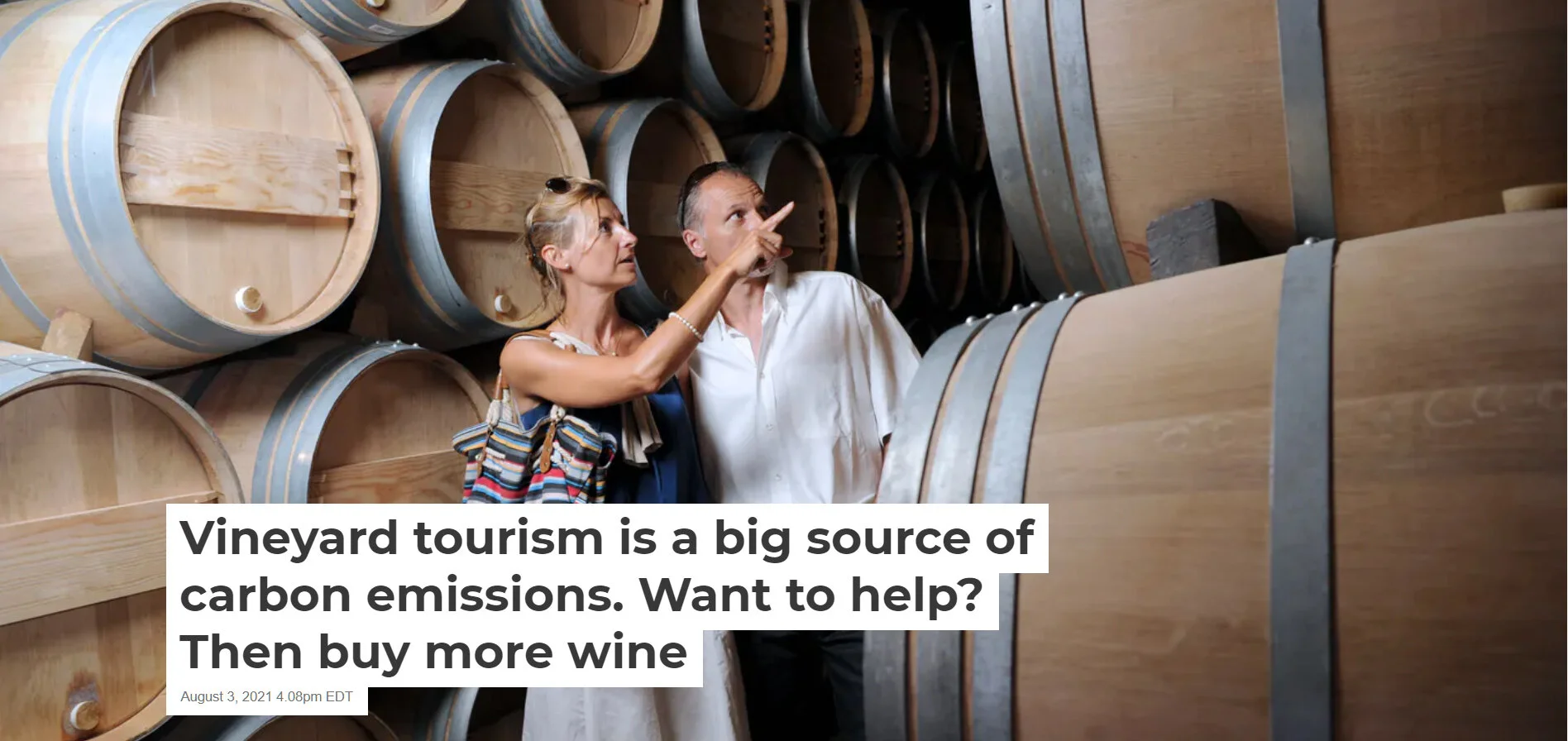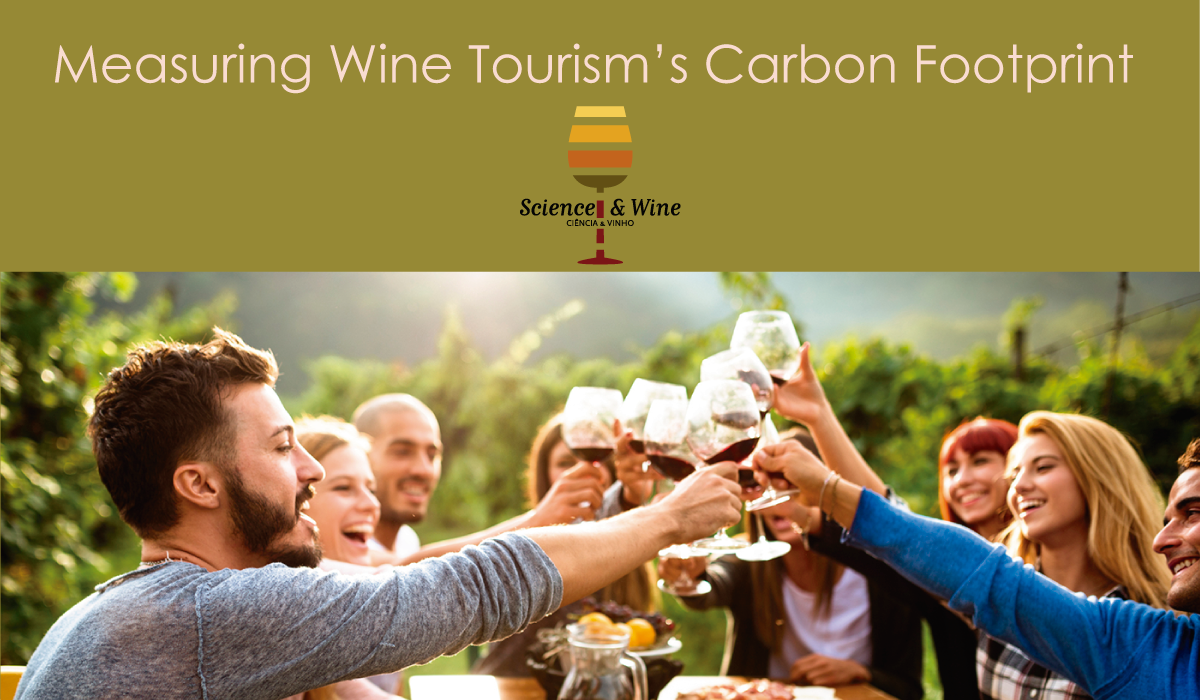Wine and Sustainability Research
A family interest in wine has led to a stream of research into what Dr. Ya-Yen Sun of the University of Queensland, Australia, and I have called “The Double-Edged Sword of Wine Tourism,” namely, the balances and trade-offs between the economic returns and environmental impacts of wine tourism that need to be considered by the industry and policy makers.
I recently launched a blog about my experience working toward the Wine & Spirits Education Trust’s Diploma in Wine, which I received (with merit) in 2020. This occasional blog will share my reflections on that process in hopes that they might make it a little easier for those who are still going through it. Read the Blog
Articles
The Double Edged Sword of Wine Tourism: the Economic and Environmental Impacts of Wine Tourism in Australia, Ya-Yen Sun and Donald Drakeman, Journal of Sustainable Tourism, Volume 29, May 14, 2021.
With more than 40 million tourists visiting wineries each year, wine tourism is increasingly seen as a business strategy that provides economic benefits not only for the wine industry but also for the surrounding region. These economic benefits come with the environmental cost of increasing carbon emissions. This important environmental issue, however, has received very limited attention in existing wine tourism policies, wine industry carbon footprint studies, and wine industry sustainability frameworks. In this study, we provide the first-ever macro-level carbon emission profile for wine tourism activities in Australia. Using environmentally extended input-output modelling, we offer a comprehensive picture of the carbon footprint of this growing market, showing that tourism is responsible for more than one-third of the wine industry’s carbon footprint. We also provide a tradeoff analysis that discusses the amount of emissions that are produced to earn one-dollar of revenue via wine tourism. The results demonstrate that the failure to take the carbon costs of wine tourism into account may encourage the pursuit of an unlimited growth approach to wine tourism, which will increase greenhouse gas emissions and contribute to the effects of climate change that are already being felt in the wine sector.
Measuring the carbon footprint of wine tourism and cellar door sales, Ya-Yen Sun and Donald Drakeman, Journal of Cleaner Production, Volume 266, September 1, 2020.
The wine industry has been dedicating increasing efforts to considering the sustainability of the environment. Various approaches have been implemented to reduce the industry’s carbon footprint. With over 40 million wine tourists globally, cellar door operations have become an important distribution channel, especially for the financial sustainability of small and medium-sized wineries, but this component has not been addressed in existing environmental life cycle assessments. This paper presents a methodology for measuring the carbon footprint of wine tourism and cellar door sales based on a combination of the bottom-up and the top-down approaches. In the case of Australia, we find both domestic and international wine tourism lead to substantially higher carbon emissions than the standard wine distribution channels. The difference can be more than 100 fold per bottle of wine. In addition, the benchmarking analysis indicates that cellar door sales may become the most carbon intensive component across all life cycle stages of wine. This information offers an opportunity to evaluate the environmental trade-offs that maybe involved in obtaining the numerous benefits of wine tourism, and to consider ways of minimizing wine tourism-related carbon emissions in the future.
Vineyard Tourism is a Big Source of Carbon Emissions. Want to Help? Then Buy More Wine, Ya-Yen Sun and Donald Drakeman, The Conversation, August 3, 2021.
The Australian wine industry has already been forced to adapt to the effects of climate change. If it fails to curb emissions associated with wine tourism, the industry is contributing to its own demise. Despite the industry’s vulnerability, the environmental sustainability of wine tourism is rarely addressed by either the industry or the academic literature. Our recent research sought to close this knowledge gap. Many of us will be wine tourists at some point – perhaps for an afternoon, overnight or even on an overseas trip to a famous wine region. So what can you do about your carbon footprint?
(If the TikTok video won’t load, check it out here!)
Measuring Wine Tourism’s Carbon Footprint, Donald Drakeman and Ya-Yen Sun, Science & Wine, July 19, 2020.
With millions of tourists visiting wineries each year, cellar door operations contribute to the economic health of wine regions around the world. They are also crucial for the financial sustainability of many wine producers. But, so far, little attention has been paid to their role in environmental sustainability. To address this issue, we have created a method for measuring wine tourism’s carbon footprint. We applied it to Australia and learned that cellar door sales may be the most carbon intensive component of all stages of wine production and consumption by a very large margin.
This method can now be applied to other wine regions to determine how much of a carbon footprint is left behind by their wine tourists, and we encourage wine researchers to do so.





